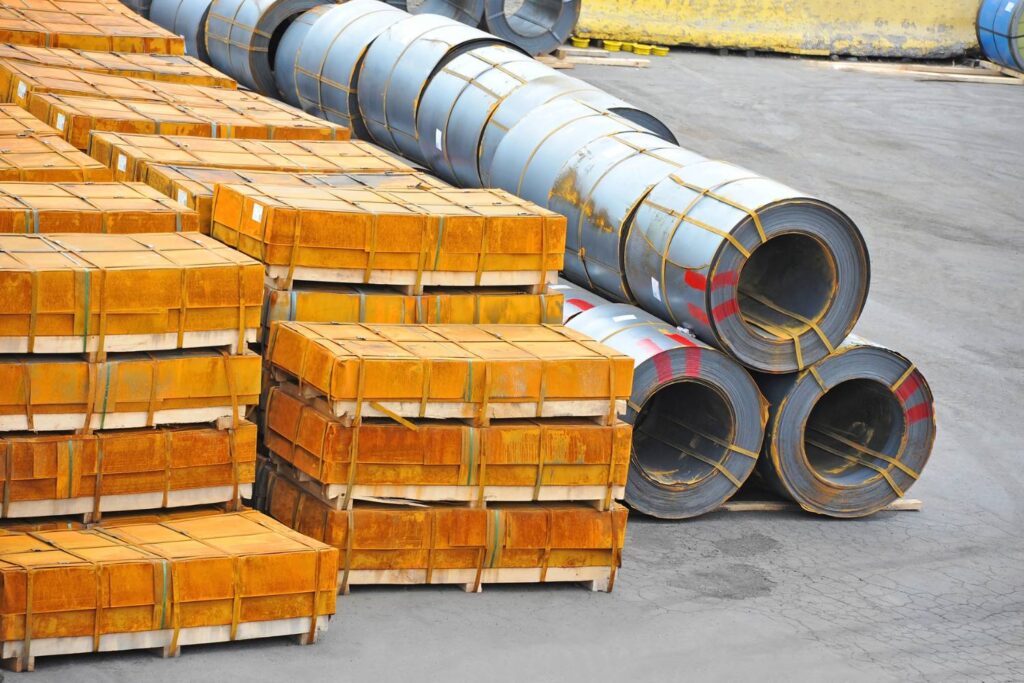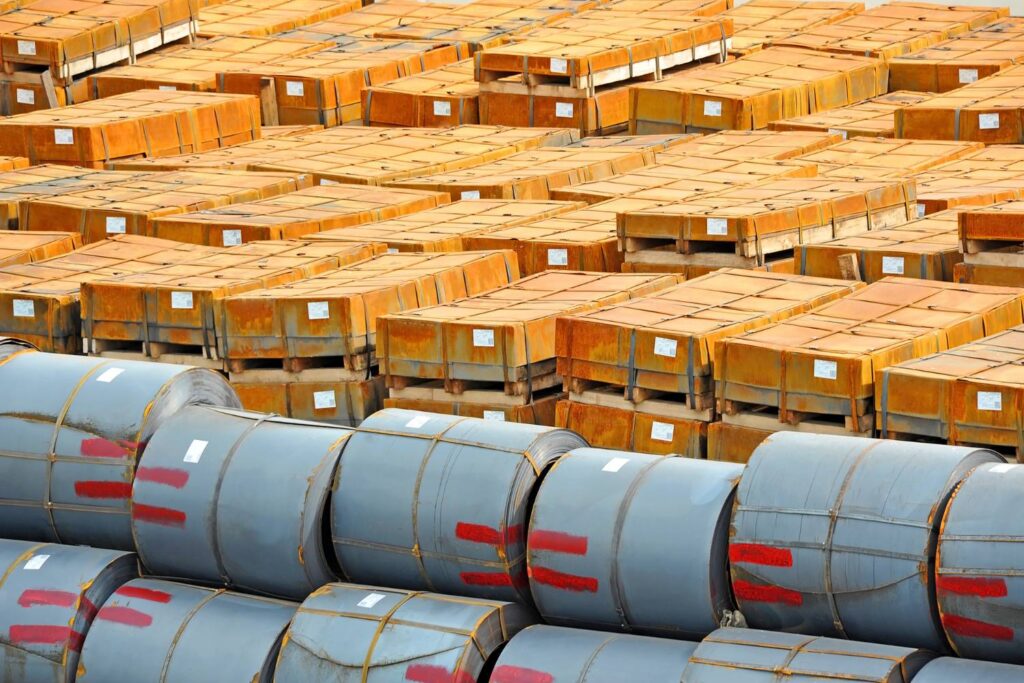Metal rolling, a process as ancient as civilisation yet as modern as the latest engineering breakthrough, shapes the backbone of our infrastructure, technology, and daily conveniences.
Rolled metals are omnipresent yet often overlooked, from the towering skyscrapers that punctuate our city skylines to the vehicles that power our commutes and the myriad of gadgets that populate our lives. This article shines a light on the various metals that undergo the rolling process, revealing their applications and the transformative journey from raw material to finished product.
As we delve into the world of metal rolling, we’ll explore the characteristics that make certain metals ideal candidates for rolling, the unique properties they acquire through this process, and the industries that rely on these materials to innovate and thrive.
Whether you’re a seasoned engineer, a student of materials science, or simply curious about the metal objects surrounding you, this exploration will provide insights into the critical role rolled metals play in shaping our world.
Let’s get straight to the point
Metal rolling is a fundamental manufacturing process that transforms metals into various forms, such as sheets and strips, essential for industries ranging from construction to aerospace.
Commonly rolled metals include steel, aluminium, copper, brass, and specialty metals like titanium and nickel alloys, each valued for unique properties like strength, corrosion resistance, and electrical conductivity.
The process is divided into hot and cold rolling, with rolling mills playing a critical role. Ongoing innovations in materials and technology are expected to enhance the efficiency, quality, and sustainability of rolled products in the future.

Commonly Rolled Metals
Metal rolling, a cornerstone of modern manufacturing, transforms metals into sheets, plates, strips, and various other forms essential for countless applications. From the construction of skyscrapers to the intricate components within household appliances, rolled metals play a pivotal role. Let’s delve into the commonly rolled metals and their significance across different industries.
Steel: The Versatile Giant
Steel, an alloy of iron and carbon, is the most commonly rolled metal, given its versatility and strength. It comes in various forms, including carbon steel, alloy steel, and stainless steel, each serving distinct purposes across industries. Carbon steel, for instance, is used in the construction industry to create structural components due to its high strength and durability.
Alloy steel, enhanced with various elements, offers improved properties for applications in the automotive and machinery sectors. Stainless steel, known for its corrosion resistance, is a staple in medical devices, kitchen appliances, and architectural facades.
Aluminium: Lightweight and Durable
Aluminum is distinguished by its lightweight yet strong characteristics, making it ideal for transportation, packaging, and construction. Rolled aluminium is used in automotive parts, aircraft components, beverage cans, and foil packaging. It offers a combination of durability and corrosion resistance that few metals can match.
Copper and Brass: Conductivity and Aesthetics
Copper is highly prized for its excellent electrical conductivity, making it indispensable in electrical wiring, electronics, and renewable energy systems. Brass, an alloy of copper and zinc, combines the best of both metals to offer a material that’s easy to machine and highly resistant to corrosion, widely used in decorative items, plumbing fixtures, and musical instruments.
Specialty Metals: For the Most Demanding Applications
Nickel alloys, titanium, and other specialty metals are rolled for their unique properties, such as high temperature and corrosion resistance. These metals are crucial in aerospace, chemical processing, and medical implants, where performance under extreme conditions is non-negotiable.
The Cold Rolling Advantage
Cold rolling, a process performed at or near room temperature, enhances the strength and finish of metal products. Cold-rolled steel, for instance, is known for its surface finish and tight tolerances, making it suitable for precision applications in the automotive industry, household appliances, and electronic components.
Specialty Metals and Alloys
The role of specialty metals and alloys in modern engineering and manufacturing cannot be overstated. These materials are the unsung heroes behind the scenes, enabling advancements in various critical sectors, including aerospace, automotive, energy, and healthcare. Let’s delve into specialty metals and alloys, exploring their unique properties, applications, and the innovative companies leading the charge in this field.
The Essence of Specialty Metals and Alloys
Specialty metals and alloys are known for their exceptional properties, such as high-temperature resistance, corrosion resistance, strength-to-weight ratio, and electrical conductivity. These materials include a wide range of metals, such as titanium, nickel, stainless steel, and exotic alloys, each selected for specific applications where standard materials do not suffice.
Leading Innovators in the Field
Special Metals Corporation is at the forefront of developing nickel and cobalt alloys, crafting materials engineered for the most demanding environments. With a legacy of over 170 years, its alloys are found in nearly every industry, shaping the technological marvels of tomorrow.
Specialty Metals in Australia is a crucial distributor of quality titanium, stainless steel, and exotic alloys. They pride themselves on sourcing materials from the world’s most sophisticated mills, ensuring their clients a comprehensive range of products.
Applications That Shape Our World
The applications of specialty metals and alloys are as diverse as the materials themselves. In the aerospace industry, these materials are crucial for components that must withstand extreme temperatures and pressures. They are used in power generation units and oil & gas exploration in the energy sector, where durability and corrosion resistance are paramount. In healthcare, titanium and its alloys are favoured for medical implants due to their biocompatibility and strength.
The Future of Specialty Metals and Alloys
As industries continue to innovate, the demand for specialty metals and alloys is set to grow. Research and development efforts are focused on creating even more resilient and versatile materials capable of withstanding the challenges of new technologies and harsh environments.
The Rolling Process for Different Metals
The rolling process is a fundamental metalworking technique, pivotal in transforming metal stocks into myriad shapes and sizes. This process, which involves passing the metal through one or more pairs of rolls, is not just about altering thickness; it’s about precision, versatility, and adapting to the unique properties of each metal to meet the demands of various industries.
Rolling Process Overview
At its core, the rolling process is divided into hot rolling and cold rolling based on the temperature at which it is carried out. Hot rolling is performed above the metal’s recrystallisation temperature, making it malleable and more easily shaped. This method is crucial for producing large-scale structural components like I-beams and rails.
On the other hand, cold rolling occurs below the recrystallisation temperature, offering a finer surface finish and enhanced strength through strain hardening, which is ideal for creating high-precision sheets and strips.
Metals in Focus
The versatility of the rolling process allows it to cater to a wide range of metals, each with its unique characteristics and applications:
- Steel: The most commonly rolled metal, it is highly versatile and finds applications in everything from construction to automotive industries.
- Aluminum: Favored for its lightweight and corrosion resistance, making it suitable for aerospace, packaging, and transportation.
- Copper and brass: Rolled for their excellent electrical conductivity and aesthetic appeal, respectively. They are used in electrical wiring and decorative items.
- Titanium and nickel alloys: Specialty metals rolled for their strength and resistance to extreme conditions, which are crucial in the aerospace and chemical processing industries.

The Role of Rolling Mills
The transformation of metal through rolling is only possible with rolling mills designed to accommodate the specific needs of different metals.
From two-high mills that are basic but essential to four-high and cluster mills that provide support for thinner materials, each type of mill plays a critical role in the rolling process. Advanced mills like tandem rolling mills allow continuous operation, enhancing efficiency and productivity.
The Future of Rolling
As industries seek more sustainable and efficient manufacturing methods, the rolling process is poised for further innovations. Developing new alloys and integrating digital technologies in rolling mills are expected to enhance the quality, efficiency, and environmental sustainability of rolled products.
Conclusion
Metal rolling is a vital process that transforms raw materials into essential forms used across numerous industries.
Specialty metals like titanium and nickel alloys further expand the possibilities for innovation in high-performance sectors such as aerospace and healthcare.
As technological advancements continue to enhance the efficiency and sustainability of the rolling process, the significance of rolled metals in shaping our world remains undeniable.

